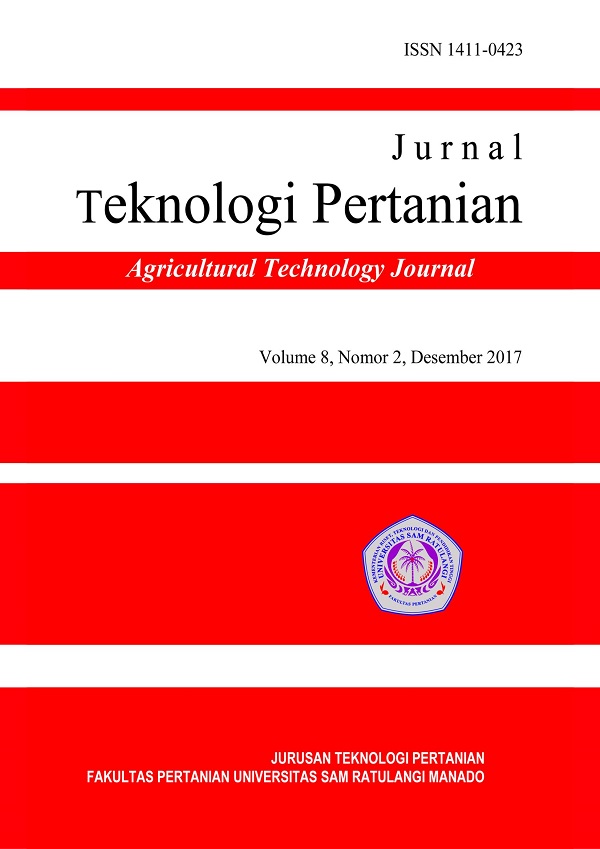STUDI PENGOLAHAN BIOETANOL TRADISIONAL DARI NIRA AREN DI MINAHASA SELATAN
DOI:
https://doi.org/10.35791/jteta.v8i2.18699Abstract
The objective of this study was to evaluate the traditional way of bioethanol processing of palm juice (nira aren) by farmers in South Minahasa Regency as an effort to increase the production and quality of processed products. Thisalso can be used as the basis for designing the better bioethanol processing tool at the farmer level. The research was conducted in South Minahasa Regency involve Kumelembuai District and East Motoling District for 2 months, using survey method. Within each district was taken 2 sample processing places, where all inputs, outcomes and farmers activities in the bioethanol processing process were recorded then the data were analyzed descriptively. The results showed that the process of tapping and destilation of bioethanol (captikus) in South Minahasa is generally the same and still using traditional tools and methods. Fermentation is carried out naturally where the yeast microbial (Saccharomyces cerevisiae) used is derived from the residual precipitate of the previous treatment sap. The distillation takes place with high temperatures up to 100 °C above the boiling point of ethanol (78.4 °C). The average alcohol content obtained is about 24% with a total yield in the range of 16.3-24.0%, while the distillation rate is in the range of 15.9-28.3 l/h depending on the distillation temperature used.
Keywords: Distillation, Nira aren, Captikus, Bioethanol.







